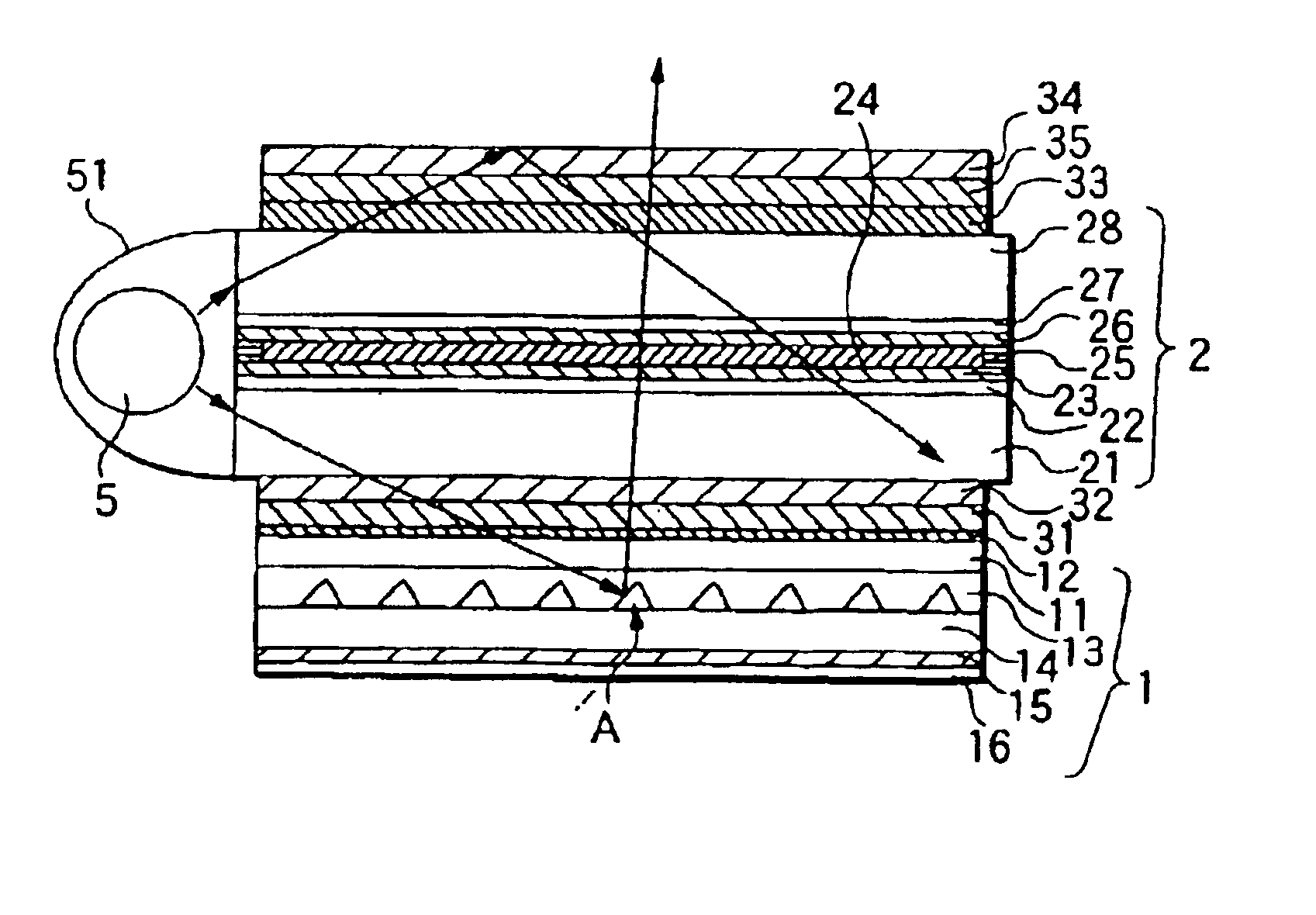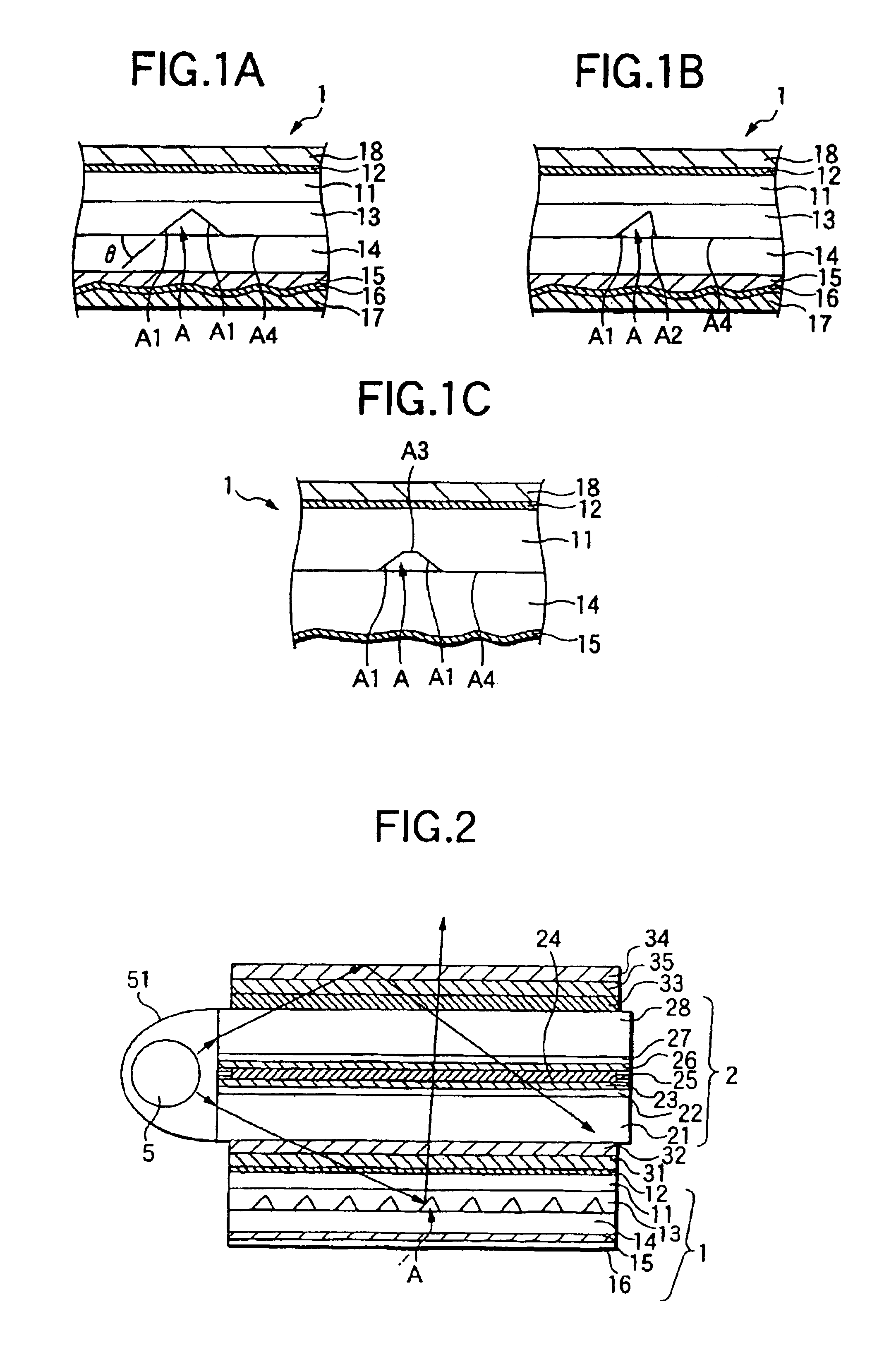Reflector and liquid-crystal display device
a display device and liquid crystal technology, applied in the direction of instruments, mechanical devices, lighting and heating apparatus, etc., can solve the problems of difficult to achieve the aforementioned effect, achieve the effect of ensuring efficient entrance, reflection and transmission of external light, and convenient provision of favorable display conditions
- Summary
- Abstract
- Description
- Claims
- Application Information
AI Technical Summary
Benefits of technology
Problems solved by technology
Method used
Image
Examples
example 1
[0074]A mold processed into a predetermined shape in advance was filled with acrylic ultraviolet-curable resin (ARONIX UV-3701, made by TOAGOSEI Co., Ltd.) by dropping with a dropper. An 80 μm-thick triacetylcellulose (TAC) film (surface-saponified substance) was stationery on the resin and made in close contact with the resin by a rubber roller so that excessive resin and bubbles were removed. The resin was irradiated with ultraviolet rays by a metal halide lamp so as to be cured. Then, the resin cured thus was peeled off from the mold and cut into a predetermined size. Thus, there was obtained a transparent film in which a repetitive layer of a plurality of optical path changing means having a refractive index of 1.533 was formed on one surface of the TAC film having a refractive index of 1.49.
[0075]Then, a mold having a surface roughened by sandblasting was used so that a resin layer having a surface fine prismatic structure was provided on a saponified surface of a 40 μm-thick T...
example 2
[0078]A mixture of 90 parts (parts by weight, the same rule is also applied hereinafter) of polyester acrylate, 100 parts of ultraviolet-curable resin containing 10 parts of polyurethane acrylate, 10 parts of silica with a mean particle size of 1.5 μm, 3 parts of organic clay and 5 parts of an acetophenone polymerization initiator was prepared through 125 parts of toluene. A 50 μm-thick TAC film was coated with the silica dispersion by gravure coating so that the thickness of the silica dispersion on the TAC film was 10 μm. The solvent was removed from the silica dispersion at 80° C. for 2 seconds. Then, the silica dispersion was cured by irradiation with ultraviolet rays. Thus, a resin layer having a surface fine prismatic structure was formed. The TAC film with the resin layer was cut into a predetermined size. Then, silver vapor deposition was applied onto the fine prismatic surface to form a light diffusing type reflection layer. Thus, a cover film having the light diffusing typ...
PUM
 Login to View More
Login to View More Abstract
Description
Claims
Application Information
 Login to View More
Login to View More - R&D
- Intellectual Property
- Life Sciences
- Materials
- Tech Scout
- Unparalleled Data Quality
- Higher Quality Content
- 60% Fewer Hallucinations
Browse by: Latest US Patents, China's latest patents, Technical Efficacy Thesaurus, Application Domain, Technology Topic, Popular Technical Reports.
© 2025 PatSnap. All rights reserved.Legal|Privacy policy|Modern Slavery Act Transparency Statement|Sitemap|About US| Contact US: help@patsnap.com


